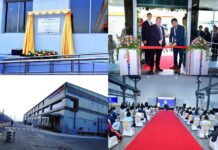
The advent of globalization has led to the branching of supply chains and their management in developed countries. In the case of developing economies manpower, raw materials and labor are available more easily at a cheap rate in comparison to developed economies. However the problems which the developing economies face is that of changing governments, exploitation, improper policies , limited technological resources , low education level and poverty. As a result, participation in such systems by key stakeholders, people of higher influence and Industrial engineers comes into picture in fixing these economies. Industrial Engineers come into play in making these developing economies manage their resources and provide lucrative solutions for their supply chains so as to achieve the goal of Customer satisfaction. Growing economies such as Bangladesh, India, Pakistan, Vietnam etc. face this huge challenge which needs to be highlighted and addressed. This has been discussed by Viraj Lele, who works as an industrial engineer and shared some of the insights on these challenges.
Limited or restricted capital/finances:
Majority of the developing countries face the situation of financial crises due to the country’s low GDP. A large focus of governments in developing countries is in providing basic nutrition and medicine than on the use of advance technology. Lack of financial backing causes the crumbing of established chains. Local savings in countries like Bangladesh are not properly invested and shortage of long-term financing not just alleviates capital formation but also loses on the interests of investors who wish to back these economies.
Wavering government policies:
Bad government policies can hamper global producers, suppliers, trade and sellers. Due to the ongoing COVID pandemic many state and local legislations have disrupted supply chains in the local communities of developing countries. Appliance industries and manufacturers specially in Asian countries produced fewer goods viz decreased production of fabric washing machines, air conditioners etc. due to government-imposed closures. With majority of the people being working from home, more load was faced by existing appliances. Due to the closures of the manufacturing, factories faced issues in their production both due to labor shortage and lack of resources and materials.
Limited use of advance technologies: With the scarcity of technology the lead time in performing a task increases many folds in time, not only are automated systems faster but they alleviate the need for human interventions and work can be done at the tip of ones’ finger with the help of a mobile application. For eg. Mobile applications can deliver wireless delivery messages in real time, addresses anomalies in transportations and provides customer discrepancy option if something fails in the system. A lack of many such applications and tech support is what’s missing in supply chains of developing countries.
Mr. Lele addresses the above issues with following best practices. He graduated as a Gold medalist in his Bachelor’s Degree & was awarded academic scholarships at prestigious universities in the USA. He is playing a critical role as an Industrial Engineer with DHL in the US. His work in supply chain has received recognition with his papers being accepted in International Journals (https://dx.doi.org/10.21275/NOV163851 -being one of them)
Best practices suggested:
- Skilled labor force:
- Productive economies not just have labor force they have a skilled labor force. This means a good understanding of formative education in building the basic skills. In Asian countries the average population has a lower cognitive competency in problem solving skills using technology as compared to developed nations. For this the state and local governments must ensure kids learn the basic skills and the working population have opportunities to adapt to skills required to do the job. When such skilled backing workforce is available investors won’t shy from investing.
- Utilizing the workforce effectively: The biggest advantage which growing economies like India have is their youth. Majority of the working population for such countries lies between 15-45 years. As stated earlier providing skilled knowledge to youths can change the dynamics of a nation. Focus should be on improving the quality of teachers right from their initial selection, incentives, regular testing and training. Quality work improvements are evident in youths who confirm a large part of workforce in the countries like Bangladesh, India, Pakistan etc.
- Cultivating supply chain experts:
- An increase in the skilled labor and proper education will give rise to professionals of the industry thereby creating experts in the form of engineers and consultants. These individuals provide effective methods to help cope the disrupting models and help in building strong supply chain by implementing examples such as increasing supply chain visibility, creating automated supply chain processes, implementing methods like drop shipping (as explained below), creating effective transportation models, etc.
- Implementing drop shipping:
- One of the supply chain solutions implemented to avoid inventory holding costs is the implementation of drop shipping. It is an order fulfillment method where in the goods are delivered from the manufacturer directly to the customer or retailer. In this the business does not stack the products to sell, instead as soon as an order is generated the seller buys inventory from the manufacturer and delivers it to the customer in some cases a point-of-sale system itself is used to process the orders from the manufacturer directly to the customer achieving speedy delivery and avoiding the inventory holding costs. To give an example: Industrial Engineer Viraj Lele implemented this technique for a retail grocery business in the US. Primary objective in his work was to have the storage area set up with minimal resources and cost. Since most of the food items stored were perishable, it was imperative for him to design a solution that keeps the freshness of the goods with prompt delivery to the customer. Their IT team supported in this project as well. The plan was to drop ship all the orders received for perishable items. Since the goal was to design a cost-effective inventory model, Mr. Lele went across the solution of drop shipping such items directly to the customer from the suppliers. This project positively impacted the operations of the client, helping them thrive in business saving many US dollars.
- Uplifting health and hygiene:
- Covid had a dramatic impact on the world and severely on developing countries. The number of fatalities is unmeasurable due to lack of resources and infrastructures. To mitigate this and improve the supply chain it is important to improve the health infrastructure. A recent report from a top consulting company highlighted that supply chain recovery is highly dependent on how quickly the health issues recede with proper care and vaccinations. As there is a close connection between health and supply chains productivity every big or small business in the country should take measures and plan for periodic pandemics and have systems ready to deal with them before it affects a larger population.
- Improving geopolitical significance:
- One of the greatest advantages which growing countries have is the presence of strong relations with their neighbors in the geography. With the highest working population of India and the availability of skilled labor such countries can thrive in their trade relations by exporting skilled materials which are weaved/ produced in the factories of the textile cities like Bhilwara, RJ. With a great textile industry policies are implemented to have a huge export of textile products to neighboring countries and the developed countries which help boost their economy drastically. This avoids overdependence and in turn the reliance on developing countries is increased for the developed nations. A best example of this can be seen when USA imposed huge trade tariffs on Chinese imports in response to their large trade gap, on the contrary 77% of India’s economy thrives on textile exports to their Chinese counterparts as we as the US.
Implementation of some of the above basic practices from an ocean of other solutions is the way forward for growing economies. To summarize, the willingness of improving supply chains is to deal with their internal issues to address their significance in improving on global level. Resolution requires on working at different levels with starting from the base and moving upwards.








































